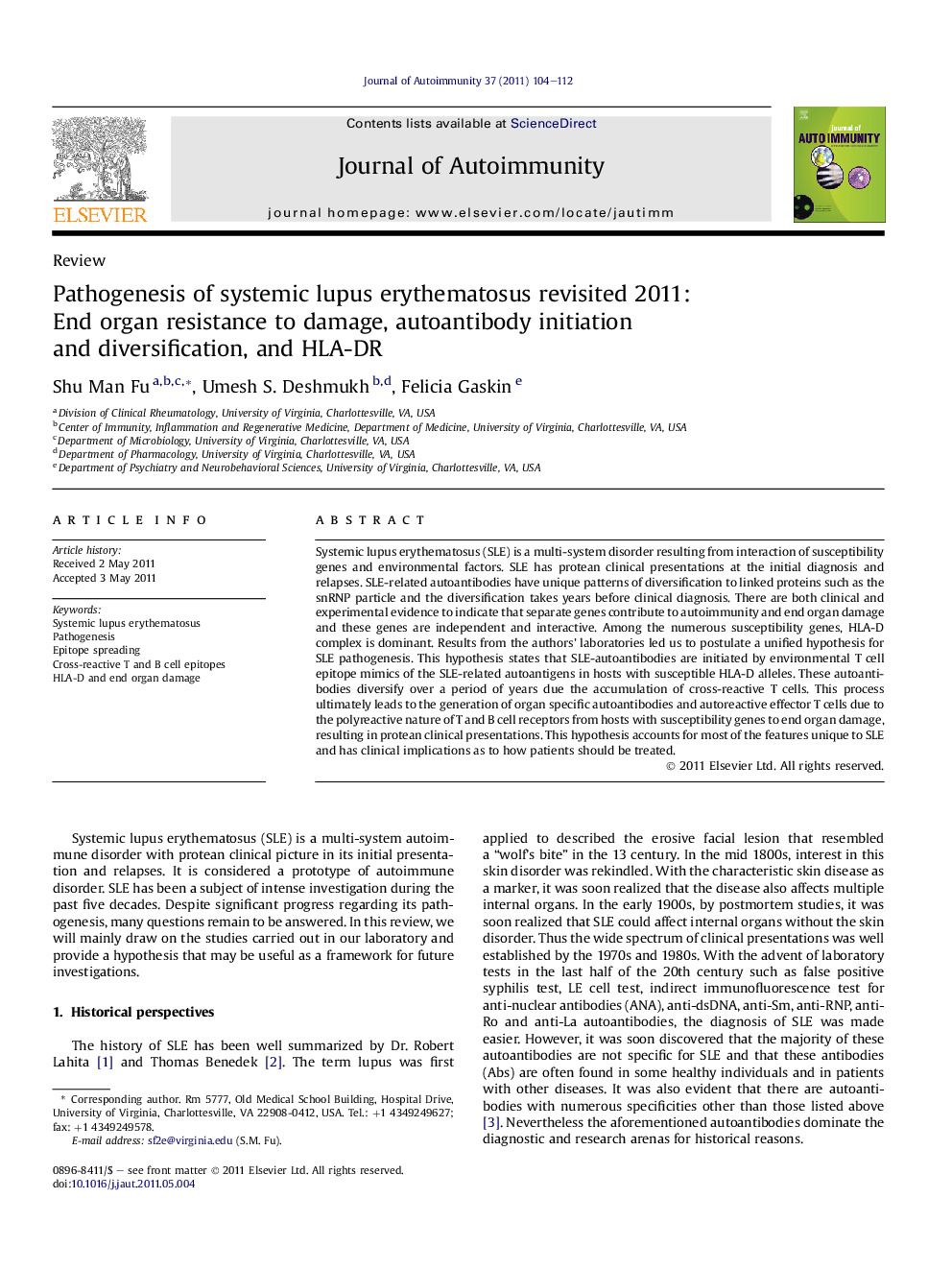| Article ID | Journal | Published Year | Pages | File Type |
|---|---|---|---|---|
| 3367968 | Journal of Autoimmunity | 2011 | 9 Pages |
Systemic lupus erythematosus (SLE) is a multi-system disorder resulting from interaction of susceptibility genes and environmental factors. SLE has protean clinical presentations at the initial diagnosis and relapses. SLE-related autoantibodies have unique patterns of diversification to linked proteins such as the snRNP particle and the diversification takes years before clinical diagnosis. There are both clinical and experimental evidence to indicate that separate genes contribute to autoimmunity and end organ damage and these genes are independent and interactive. Among the numerous susceptibility genes, HLA-D complex is dominant. Results from the authors’ laboratories led us to postulate a unified hypothesis for SLE pathogenesis. This hypothesis states that SLE-autoantibodies are initiated by environmental T cell epitope mimics of the SLE-related autoantigens in hosts with susceptible HLA-D alleles. These autoantibodies diversify over a period of years due the accumulation of cross-reactive T cells. This process ultimately leads to the generation of organ specific autoantibodies and autoreactive effector T cells due to the polyreactive nature of T and B cell receptors from hosts with susceptibility genes to end organ damage, resulting in protean clinical presentations. This hypothesis accounts for most of the features unique to SLE and has clinical implications as to how patients should be treated.
